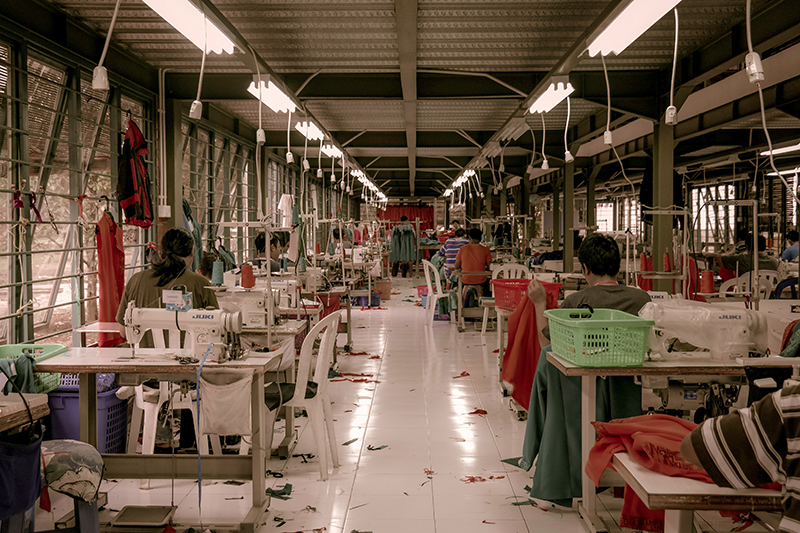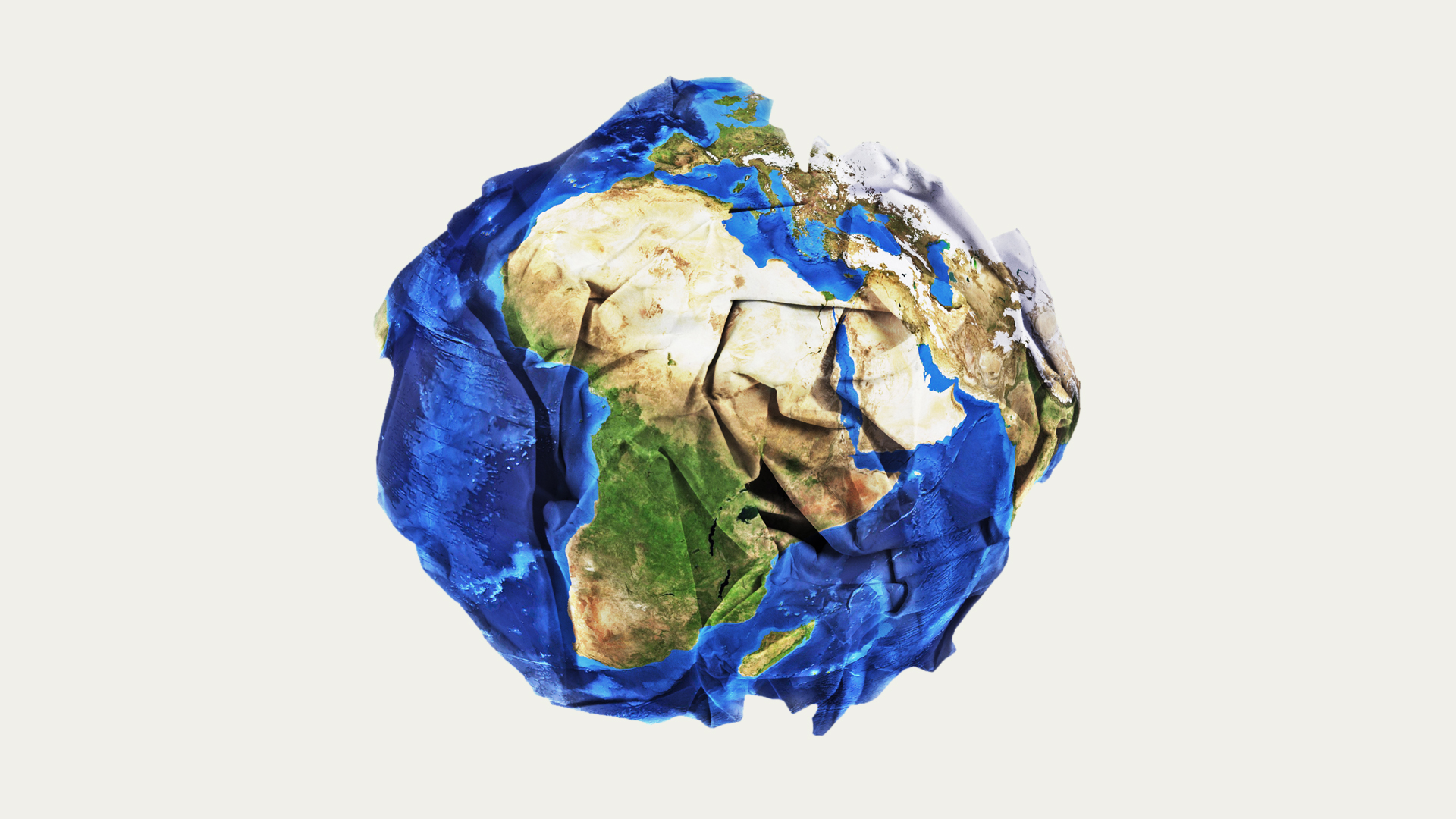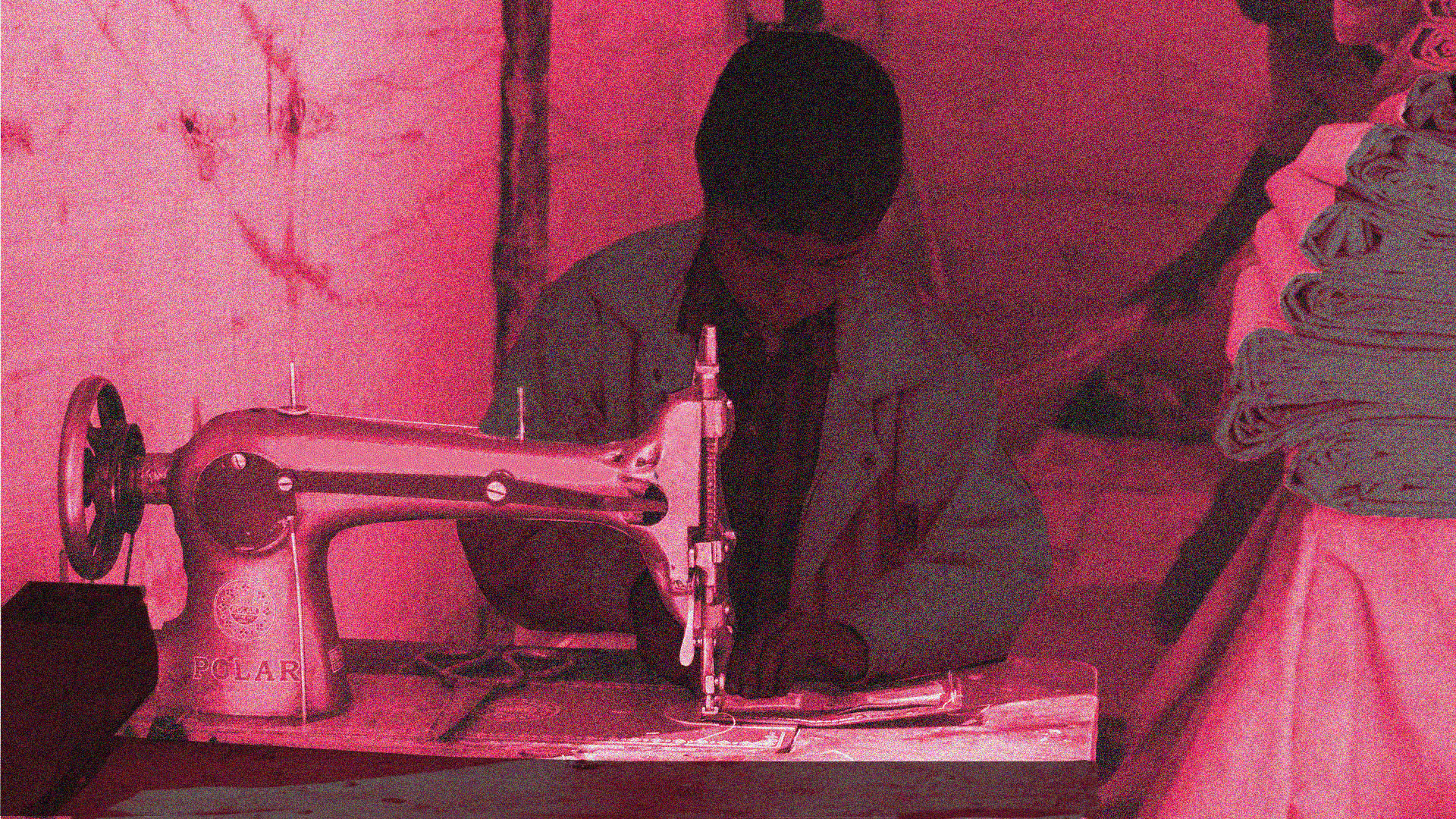What Price Fashion?
An Inside Look at the Global Garment Industry
The fashion industry is riddled with ethical issues—everything from child labor, slavery, terrible working conditions and even violence. How can consumers dress themselves while remaining true to their values?
Elizabeth Cline has been a leading voice in the ethical fashion community for two decades. An expert on sustainability, consumer culture and labor rights, she has written two bestselling books about fashion: Overdressed, an investigation of the fast fashion industry, and The Conscious Closet, a follow-up guide to help readers fashion their own ethical wardrobes. Cline characterizes the latter as “a manifesto and call to action to transform one of the most polluting industries on earth into a force for good.” The book’s introduction closes with the exhortation: “Let’s use the awesome power of fashion to change fashion itself and in turn we just might save the world!”
In the wake of recent events, though, Cline shifted her focus away from the power of individual ethical consumerism. During the height of the COVID-19 pandemic, major brands canceled orders worth about US$40 billion—some of which were already in production or had been completed and shipped. More than one million garment workers were affected in Bangladesh alone. Unfortunately, these workers lost not only wages but also their jobs. “What did all of my decades of Ethical Consumerism do to protect these workers and raise their wages?” Cline asked. The answer was, “Nothing. My Ethical Consumption couldn’t protect Black and brown people from dying and getting critically ill in far higher percentages than white people during the pandemic. It hasn’t put a dent in climate change or plastic pollution.”
Cline isn’t the first to comment on the fashion industry’s negative impacts, but the work of journalists, filmmakers and researchers has had limited effect in changing the system. Corporations are very reluctant to make necessary changes that might jeopardize their profits. And the bottom line for most shoppers is having access to the newest styles at the lowest cost—regardless of the effects of mindless consumption.
The Growth of an Industry
It hasn’t always been this way. The Industrial Revolution changed our relationship with what we wear. We stopped appreciating how we got our clothing and the time, skill and resources required to make it, because mechanized production meant garments could be produced quickly and less expensively. By the 1920s, ready-to-wear clothing for women comprised more than 75 percent of the industry. Decreasing prices and the latest Parisian designer styles—copied and mass-produced—made fashion accessible to the masses. This “democratization of fashion” meant that it was no longer only the wealthy who could enjoy frequently changing fashions.

It wasn’t just production that was transformed. Department stores, newly developed to be “for and about women,” turned shopping into an enjoyable pastime available to everyone. New publications specifically for women promoted the concept of being “in fashion.” After the deprivations of World War I and the Great Depression, people were eager to return to a consumer lifestyle, and national economic prosperity was contingent on that return. Even when World War II interrupted that development, fashion magazines conveyed the idea that citizens could serve their country and look good doing it.
Accurately foreseeing the future we now live in, economist Victor Lebow wrote in 1955, “Our enormously productive economy demands that we make consumption our way of life, that we convert the buying and use of goods into rituals, that we seek our spiritual satisfactions, our ego satisfactions, in consumption. . . . We need things consumed, burned up, worn out, replaced, and discarded at an ever-increasing pace.”
It took some time for this to come into full effect. It wasn’t until trade protections were phased out over the ten years culminating in 2005 that the fashion industry began its current trajectory. Fewer restrictions meant fashion brands could increase profits by moving operations from expensive domestic manufacturing to lower-wage countries and by importing cheaper goods. Since clothes could be made anywhere, and developing countries could now export unlimited amounts of goods to major consumer countries like the US, the fashion industry became, in Cline’s words, “one of the most globalized, if not the most globalized industry in the world.”
From Fashion to Trash
With globalization has come complexity. There is no uniform requirement for collecting or reporting exact data about the fashion industry’s full global output, but estimates show the production of clothing has more than doubled since 2000, with between 80 and 150 billion garments produced—or overproduced—each year. We can extrapolate from sales figures the number of items the average American buys (68 per year), many of which are seldom worn. And estimates show that nearly half of the 152 items in an average UK closet are rarely worn, if at all.
“With the amount of clothing that has already been produced, there is no practical need to make new items every season, and yet the brands continue to do it for one straightforward reason: the corporations’ bottom line.”
Although those numbers are only an educated guess, one thing is sure: We are undoubtedly buying more clothing than ever before. Fast fashion is everywhere: in our stores, in our social media feeds, in our closets. Fashion stylist, writer and consultant Aja Barber explains the appeal of fast fashion with a charge that’s been leveled against other industries: planned obsolescence. “Whiffs of planned obsolescence appear in other systems, but in fashion it’s a little different. It means making products that are far from superior in order to make a quick sale and have a customer who returns often to buy more goods (often to replace the goods they’ve just been sold).” People in lower socio-economic groups are particularly affected by this. “If you always have to go for the twenty-dollar boots because that’s all you can afford and they never last more than a season, next season you’re buying another pair of twenty-dollar boots.”
Whether because the garments have worn out more quickly than expected or we’re just tired of them and want something new, too many of our fashion purchases wind up in the discard pile.
And where do all those unwanted clothes go? Many are donated, which can be a good choice—if the clothing is in usable condition. But donation centers are often overwhelmed by the volume of clothing they receive, much of which is damaged or of poor quality and cannot be resold. A small amount of these rejects are recycled and repurposed. The rest are sent to landfills, incinerated, or shipped to poorer nations for them to deal with.
This practice of “waste colonialism” allows the Global North to offload its problems, ostensibly as a way to stimulate the economies of developing nations. However, the negative consequences of this practice on the receiving countries are undeniable. Their local garment industries are devastated, even as their secondhand clothing markets are burdened with sorting, repairing and selling or disposing of the more than 4.5 million metric tons of cast-off clothing they receive per year. Much of this ends up as waste, which is either dumped or burned, causing significant harm to sensitive ecosystems and human health. The resulting environmental risks must then be managed, and these countries are forced to take on debt to cover the costs of dealing with other people’s discards.
#whatsinmyclothes
We don’t know where our clothes come from or where they go when we’re finished with them, but we want them quickly, and we want them to be cheap. For more than 60 percent of garments, we achieve this by using petrochemicals.
There are few examples of clothing from the past because natural materials like cotton, linen, silk and wool biodegraded, leaving a relatively tiny environmental footprint in the process. But in the mid-20th century, the footprint of fashion began to expand with the development of petroleum-based synthetic fabrics. Nylon, the first fully synthetic fabric, was patented in 1938 and introduced to the public in the form of women’s stockings nearly two years later. By 1958, other petroleum-based fabrics had been developed, including polyester, acrylic and spandex.
“Since the invention of the mechanical loom nearly two and a half centuries ago, fashion has been a dirty, unscrupulous business that has exploited humans and Earth alike to harvest bountiful profits.”
Today, synthetic fabrics are produced almost entirely in Chinese factories. They are versatile and cheap to manufacture, but the true cost of producing textiles from oil is not reflected in their cheap manufacturing. Dr. Subramanian Senthilkannan Muthu, Chief Sustainability Officer for Green Story, a sustainability platform, clearly outlines the negative effects of synthetic textiles. They’re obtained from non-renewable resources and are produced using significant energy and chemicals, while emitting toxic pollutants that cause high greenhouse gas emissions. Muthu adds that managing waste from the production and use of synthetic textiles is also problematic because they aren’t biodegradable. Add to that list the aforementioned challenges with recycling or reusing synthetic garments, and we see threats to human and environmental health throughout their lifecycle.
It might seem that reducing the use of synthetics could alleviate many of the problems that plague the fashion industry. But it’s more complicated than that. Natural fabrics such as cotton and wool may also come with negative impacts, including excessive water use, soil degradation from farming, and pollution from agrochemicals. Some natural fabrics such as bamboo and rayon, while sourced from plants, require toxic chemical processing to manufacture, polluting air and water and sickening people in the area around the production plants.
#whomademyclothes
At the scale we produce and consume clothing, environmental issues are not the only problems with the fashion industry. Journalist Lauren Bravo writes that “Fashion’s environmental issues are inherently social issues too, because people are always affected—usually the youngest, poorest or most vulnerable first. Delve into any one of fashion’s ecological crimes, and sooner or later, you’ll find human suffering.”
A Rubric for the Rich
The principles contained in the Bible provide a timeless code of ethics that applies to all levels of society. For the wealthy whose prosperity depends on the workers they hire, there is much to consider. At the foundational level, everyone is instructed, “You shall love your neighbor as yourself” (James 2:8). Hence the rich should not disadvantage the poor: “He who oppresses the poor to increase his riches . . . will surely come to poverty” (Proverbs 22:16). Rather they should show compassion and extend generosity—“he who has mercy on the poor, happy is he” (Proverbs 14:21). The rich should be advised that the pursuit of wealth can lead to many troubles, because “the love of money is a root of all kinds of evil” (1 Timothy 6:10). Commenting on the obstacle that wealth can become, Jesus said, “How hard it is for those who have riches to enter the kingdom of God” (Luke 18:24). And just as working for two masters is frustrating, futile, and finally impossible, He concluded, “You cannot serve God and wealth” (Matthew 6:24; NRSV). Better for all to search out the middle way: “Give me neither poverty nor riches” (Proverbs 30:8).
There are more than 75 million people involved in the production segment of the garment and textile industry supply chain, more than 75 percent of whom are women, most of them working in developing nations. The industry is dependent on these “invisible” workers, but the complexity of the global supply chain makes it easy for us to overlook the people who make our clothes. Brands use this knowledge to their advantage. As journalist Alyssa Hardy explains, “Workers are far removed from the brands they are making clothing for, a fact that allows blame or responsibility for their treatment to be pushed off onto someone else. The brands prefer it this way, because fixing these issues would implicate a larger cultural problem throughout the industry.”
“From the runway, fashion looks like an industry full of beauty and privilege, but the factory floor tells a different story.”
Because of the lack of transparency in the industry, Hardy points out, “Factory garment workers are not treated as employees of the brands they are making clothing for and therefore don’t receive the same protection as someone who works at the parent corporation.”
Inadequate ventilation, exposure to hazardous chemicals without protection, and unsafe facilities are largely ignored until it is too late. Recent tragedies include the 2012 Ali Enterprises factory fire in Pakistan, which resulted in the deaths of 289; and the 2012 Tazreen factory fire in Bangladesh, in which 112 workers were killed and many more injured trying to escape.
The deadliest industrial disaster in history took place in 2013 at Rana Plaza, an eight-story industrial complex in Bangladesh. Despite complaints about unsafe working conditions, the eight-story industrial complex continued to operate, housing four garment factories that employed more than 5,000 people and supplied goods to multiple brands in the fashion industry. The building’s poor foundation and unpermitted addition of floors made it structurally unsound. Despite visible cracks in the building, supervisors required employees to return to work. The decision to continue operations despite the warning signs was a grave mistake; on April 24, 2013, the building collapsed, resulting in the tragic deaths of more than 1,100 people and leaving as many as 2,000 with life-altering injuries.
The Rana Plaza disaster could have been a turning point for the entire industry. It caught the world’s attention and there were some positive results. The Bangladeshi government made it a priority to inspect and assess all garment factories that produced products for export. But substandard workspace conditions still exist around the world and aren’t the only issue garment workers face. Due to the lack of oversight across the industry, labor exploitation remains a serious concern.

Image courtesy Rio Lecatompessy/Unsplash
Most garment workers are severely underpaid, earning far less than a living wage. Minimum wages are set by individual nations, but there is an average 45 percent gap between the minimum and living wage in the major garment-producing countries (as reported by the WageIndicator Foundation in 2022). According to a 2019 Oxfam report, not a single one of the 4 million garment workers in Bangladesh earned a living wage.
Verbal threats, physical assault and sexual assault are rampant in the industry. Long work weeks with mandatory overtime, sometimes up to 96 hours, are not uncommon. Some major fashion brands have been accused of using child labor in their factories. Slave labor remains a concern, particularly for garments made in China and sold by ultra-fast fashion companies.
#wearyourvalues
But there is some good news. The US$1.7 trillion garment industry is facing increasing calls for change on a governmental level. California has recently passed groundbreaking legislation to protect state garment workers, requiring a minimum hourly wage for their work. Pending legislation in the US will hold brands accountable for improving working conditions and wages for domestic garment workers, as well as for the social and environmental impacts of their supply chain. France is leading the way in demanding transparency from major brands through new regulations that require brands to disclose important information such as the percentage of recycled material used in their products, the location where garments are sewn, and the materials used. The UK and European Union are proposing stricter regulations for the industry as well. Despite these comprehensive top-down regulations, it will be years before there is comprehensive change.
In the meantime, what can we do individually? If Cline feels that her decades of ethical consumerism did nothing to protect workers or the environment, is it worth continuing to care about what we buy? To be clear, Cline isn’t saying we should give up on individual, bottom-up actions. We can still make a difference by supporting top-down changes, like fair labor practices and workers’ rights, she says, and ethical consumerism can be a gateway to more lasting change. It is still an important step towards a better future. Fashion and culture journalist Dana Thomas adds, “We, as consumers, play a pivotal part. It’s time to quit the mindless shopping and consider what we are doing, culturally and spiritually.”
“Extending the average life of clothes by just nine months would save £5 billion in resources used to supply, launder and dispose of clothing.”
Unfortunately, there’s often a value gap when it comes to fashion. When asked, many consumers say they’re concerned about the environmental impact of their wardrobes, or the need for garment workers to have appropriate pay and safe working conditions. But if the price is right, ethical concerns go out the window. Barber says, “When you demand that ethical fashion be ‘affordable,’ what you are asking is that it no longer be ethical . . . because of exploitation of everyone else. It is not affordable to anyone within the supply chain.” Truly ethical choices aren’t always easy ones. We must ask ourselves, Are we contributing to the problem? Are we a part of the attitudes, values and actions of that system?
Answering these questions honestly can help us recognize that our choices affect not just ourselves, but everyone and everything along the entire supply chain—the people who made our clothes, as well as the environment—from the first step of production to the end of the garment’s life. Realizing that the cost of fashion is not only financial, but also social and environmental, should lead us to decelerate our consumption and carefully choose what we do purchase.
Appreciating what we already have and what it took to get it—buying less but buying better when we need to—can help slow down the process and encourage corporations to adopt ethical practices, pay living wages to workers and make sure the manufacturing process is safe both for workers and for the environment throughout the entire garment life cycle. We must find a way to look our best without compromising the well-being of others to ensure our style is a reflection of our values. While acknowledging the complexities of the issue, we can still make informed personal decisions to contribute toward a more sustainable future.
Wear Your Values
Fashion designer Orsola de Castro puts it succinctly: “The most sustainable garment is the one already in your wardrobe.” In other words, we can do more by buying less to begin with. Evaluate your current wardrobe and be honest about needs versus wants. Unfollow the fashion influencers and develop your own style using what you have.
When you do need something, think secondhand first.
- Buy from thrift, vintage and consignment shops (in person or online).
- Swap or borrow from family or friends.
- Renting is a great option for special one-time-wear items (even wedding dresses).
- Get creative. Clothing can often be refitted, refashioned or upcycled to create something new. You can learn to do this yourself, or find a local sewist to do it for you.
Whether it’s new or new to you, there are things to consider before you buy.
- Only buy items you plan to wear repeatedly.
- Assess the quality of fabric and workmanship. A garment with low-quality fabric or poorly sewn seams won’t last.
- Buy clothing with sustainability certifications when available.
- Look at care instructions to be sure you can keep the garment in prime condition.
Clothing is an investment—take care of it.
- Clean your clothes appropriately. Too-frequent cleaning can damage clothing; use your eyes and your nose to determine when it’s laundry day.
- Make repairs as needed. Many are quick and easy, but a good sewist can help with larger ones.
When it’s finally time to say goodbye:
- Organize clothing swaps with friends and family.
- Resell your unwanted clothes in consignment shops or online resale sites.
- Check with your local shelters to see whether they accept clothing in good condition.
- If the clothing is in poor condition, repurpose it for cleaning cloths.



